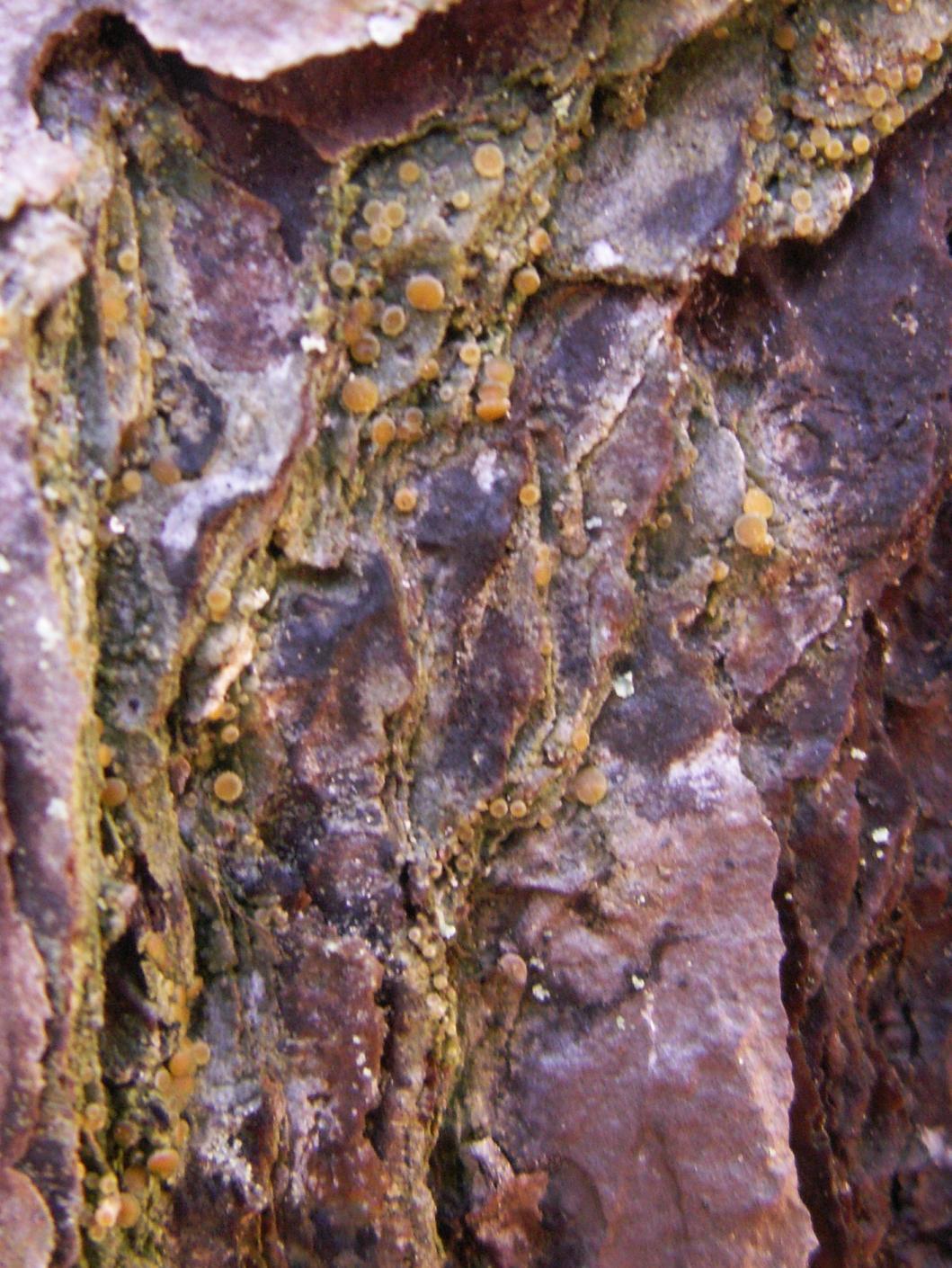
Consortium of Lichen Herbaria
- building a Global Consortium of Bryophytes and Lichens as keystones of cryptobiotic communities -
- Home
- Search
- Images
- Species Checklists
- US States: O-Z >
- US National Parks
- Central America
- South America
- US National Parks
- Southern Subpolar Region
|
Family: Coenogoniaceae |
Nash, T.H., Ryan, B.D., Gries, C., Bungartz, F., (eds.) 2004. Lichen Flora of the Greater Sonoran Desert Region. Vol 2. Life habit: lichenized Thallus: crustose, thin, effuse, superficial, ecorticate, often inconspicuous, membranous or scurfy-granular surface: +pale gray to yellowish green, dark green or olive-green, +shiny photobiont: primary one a Trentepohlia green alga, secondary one absent Ascomata: apothecial, scattered, rounded, sessile, marginate at least when young disc: translucent, pale, white to yellow, pink, buff, or pale orange to intensely yellow or orange-red, round, concave-urceolate when young, then flat, without a thalline margin exciple: pale, hyaline inside, thick, mostly paraplectenchymatous, composed of thick, interwoven hyphae, not radiating hymenium: hyaline, I+ blue; paraphyses: simple, distinctly septate, with +thickened, knoblike tips; hypothecium: hyaline or pale asci: narrowly cylindrical, thin-walled; wall: K/I+ pale blue, thin, not thickened at apex and without internal apical structures, 8-spored ascospores: uniseriate, hyaline, 1-3-septate, ellipsoid to fusiform, smooth, without a perispore Conidiomata: pycnidial partially immersed, pale dull yellow, with a hyaline wall; conidiogenous cells: arising singly or several together from branched supporting cells, cylindrical or lageniform conidia: hyaline, simple, formed acrogenously, short, +oblong or ellipsoid, sometimes biguttulate Secondary metabolites: none detected Substrate: on acid bark, moss or humus, sometimes over rock (rarely directly on rock), or foliicolous in several tropical species Geography: temperate-boreal to mostly tropical-subtropical. Notes: The North American species may sometimes be sterile but with pycnidia. A recent molecular phylogenetic study (Kauff and Lutzoni, 2002) considers Dimerella to belong to "Coenogonium s. l.", but does not propose any new combinations for the species in Coenogonium. For this treatment we retain Dimerella as a separate genus. |
Powered by Symbiota









